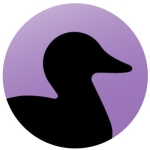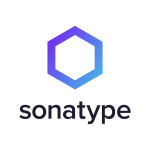What is our primary use case?
It's an individual tool that security professionals use for their manual pen-testing. We use it for capturing the traffic, intercepting the traffic between the browser and the application. We try to manipulate the applications, the traffic so that whatever input that is accepted by the application is sanitized and validated. We try to analyze the application for input validation. All inputs are handled correctly.
Another use case is having a scanner module built-in where you can browse the entire application. The scanner can continuously scan the application for vulnerabilities based on OWASP Top 10 standards. Likewise, you can come to know what vulnerabilities are in the application. Later, you can go through the vulnerabilities one by one and triage them.
There are many different modules in Burp Suite. We have a comparator module where you can compare the request and response. You have the Repeater module where you can repeat the sequences. They can be used for other test use cases such as doing disciplinary attacks or brute force attacks on the applications.
Basically, there are a wide variety of use cases and applications.
How has it helped my organization?
Request handling capacity, it do not handle huge chuck of requests as it freezes.
And obviously as all tool does Burp also gives some false positive results, vetting has to be done thoroughly.
What is most valuable?
The most valuable feature of Burp Suite is probably how we can intercept the request and response. We can manipulate a request and send it back to the server. Intercepting is one of the best features for sure.
The scanner is excellent. The scanner is one of the good features. If you compare it to more expensive tools like WebInspect or IBM AppScan, you'll realize that, at a very low cost, Burp Suite can provide good results.
The is a good amount of documentation available online. The solution is stable.
The initial setup isn't too complex.
The solution offers some great extensions through a BApp store. Users can implement extensions and upload them to the BApp store.
The solution has a great user interface.
Its strong user community is always helpful when it comes to any problem regarding the tool.
What needs improvement?
Although it provides great writeup for the identified vulnerabilities but reporting needs to improve with various reporting templates based on standards like OWASP, SANS Top 25, etc. The tools needs to expand its scope for mobile application security testing, where native mobile apps can be tested and can provide interface to integrate with mobile device platform or mobile simulator's. Burp suite has great ability to integrate with Jenkins, Jira, Teamcity into CI/CD pipeline and should provide better ways of integration with other such similar platforms.
For how long have I used the solution?
I've been using the solution for more than eight years now - right from their open-source free version through to their professional version.
What do I think about the stability of the solution?
The stability is quite good. We have no complaints. There are no bugs or glitches. It doesn't crash or freeze. It's reliable.
What do I think about the scalability of the solution?
Obviously, Burp Suite is a DAST tool and good asset for pentester's. However, we need to see how best it can be utilized for automation so that DAST can be automated. Dynamic application testing can be automated and can integrate Burp into CI/CD pipeline using Jenkins. That said, we need to make it use it in a more efficient way. There should be some methods or some guidance from Burp on how best we can use it for automation.
How are customer service and support?
We've never interacted with tech support. That's mostly due to the fact that there is already a lot of material that is available online. With all of the details readily available, we don't need to interact with tech support.
How was the initial setup?
The initial setup isn't too difficult. It's JAR based. I would say it's an analog file. It just requires minimum requirements like Java and a license. After that, you are good to go.
What's my experience with pricing, setup cost, and licensing?
Burp Suite provides different licenses. They have open-source free-to-use licenses, which can be used by anyone. Then, they have a standalone license that, as a security professional, you can use. They have their Enterprise version as well. I use the professional version.
Initially, when we were using Burp Suite, I hardly remember the version we started at.
The actual costs vary from country to country, however, I would say it's cheaper if you compare it to other DAST solutions and tools.
Compared to other web applications assessment tools Burp suite is a solid tool for web based penetration testing for a reasonable price.
What other advice do I have?
We are just customers and end-users.
I'd advise other organizations that this solution is a pretty good tool for manual penetration testing. It has good features like the Scanner and Sequencer, Repeater, and there are extensions. Burp extensions are available where they can customize Burp behavior using their own or third-party code. Those features will be really useful for Burp users. It's also obviously a very cost-effective option.
I would rate the solution at a nine out of ten.
Which deployment model are you using for this solution?
On-premises
Disclosure: My company does not have a business relationship with this vendor other than being a customer.


















